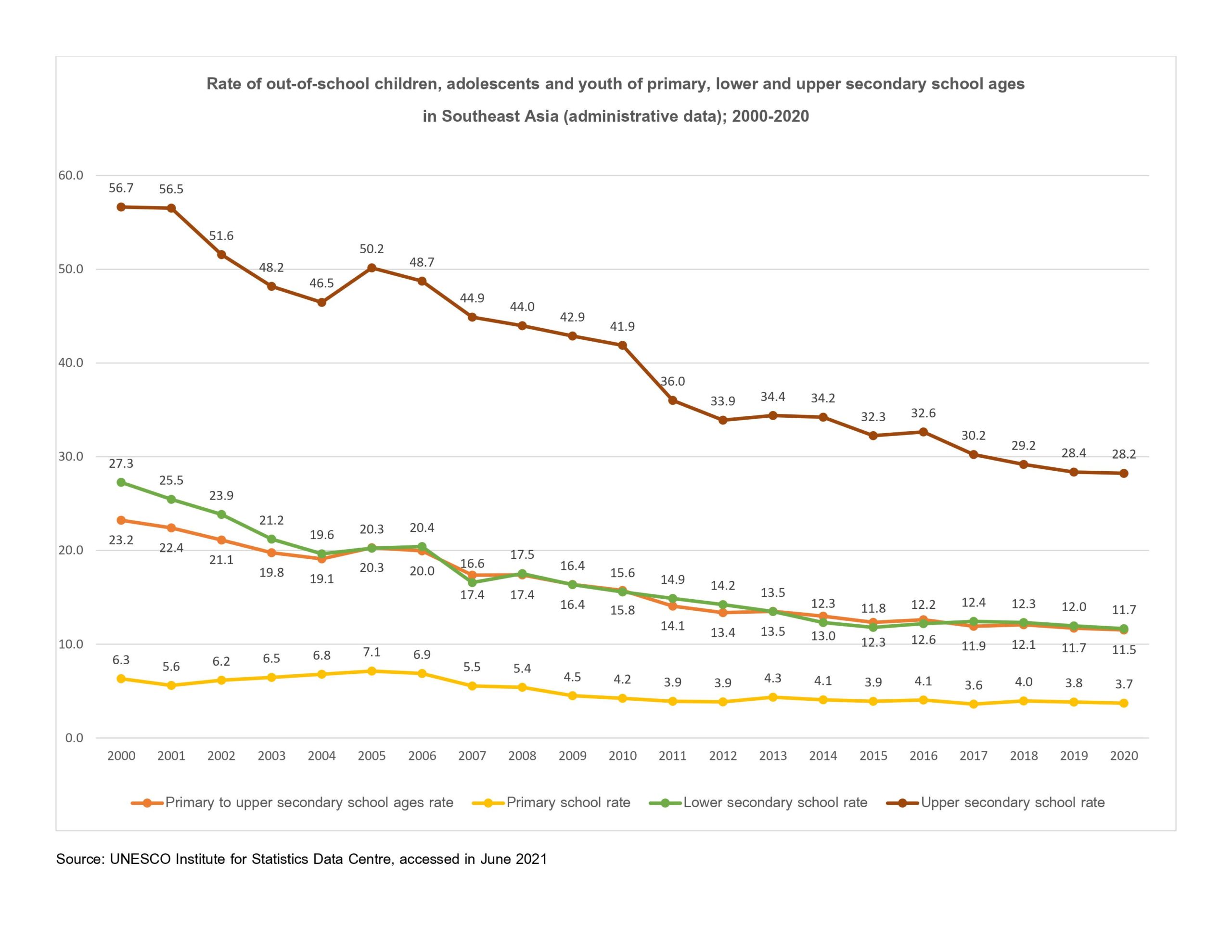Different factors affect to boys or girls not to attend, continue, or complete education. Intersectionality is the key term that can help us to understand the gender disparities in education.. Intersectionality refers to the way in which different forms of discrimination and disadvantage combine and overlap. Characteristics such as gender, age, disability, ethnicity, geography and socio-economic status can intersect with each other, causing multiple levels of disadvantage and marginalization.
Early marriage is one of the causes for women not to get educated further.
“In Southeast Asia, an estimated 10-24% of women aged 20-24 years old are married by the time they turn 18 (Plan International Australia, 2013). In Cambodia, 18% of women are married by the time they turn 18 (UNICEF, 2014). In Lao PDR, one in five of women aged 15-19 are either married, 10 Situation Analysis of Out-of-School Children in Nine Southeast Asian Countries divorced or widowed, relative to just 6% of young men. In Timor-Leste, where girls can legally be married at 15 and boys at 18, almost 19% of girls are married by the time they are 19 (Plan International Australia, 2013). In Indonesia, around 22% of women aged 20-24 are married by age 18. The issue came into sharp focus in Indonesia when a recent Constitutional Court decision upheld the existing marriage law that permits girls to be married at 16, whereas boys can only be married at age 19 by law (UNICEF Indonesia, 2015).”
Covid pandemic has made the situation worse, causing a risk of 24 million students to drop out from education: lot of effects will be only discovered after the pandemic and at the moment we don’t have most recent data from different countries. Covid has caused and causes bigger risks for girls and women, since majority of the housework, care taking and healthcare (paid or unpaid) is taken care by girls and women and when being at home, they are also more prone to experience domestic violence and sexual abuse. While exiting the pandemic, we should ensure girls and women return to school.
Herewith are the best resources to start working on these disparities, for more fair and equal education! Are we missing something ? , give us a shout!




